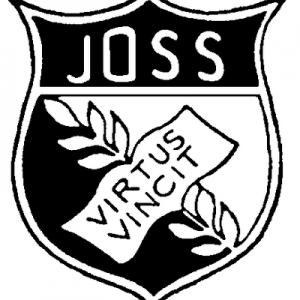Samantha’s Summary of September 2020 DPAC Meeting (Facilities, etc.)
Samantha Anderson, new JO mom, has volunteered to be the JO DPAC representative, meaning she goes to 2-3 hours meetings once a month or so, on our behalf. Thanks Samantha! Of note in this post is the link to the Long Range Facilities Planning presentation.
She reports:
District Parent Advisory Committee General Meeting September 24, 2020
Introduction
After introductions, the DPAC Chair, Gord Lau, asked participants to share how school openings have gone. Overall, participants said that openings have been good, and teachers and administrators have been working very hard to make things go smoothly. Many people also shared how their first PAC meetings went, and a common theme was that participation was up thanks to online meetings which appear to have lowered barriers for attendance.
Issues of concern in school openings & COVID 19:
- Vancouver Coastal Health has not been reporting C19 breakouts in Vancouver schools. Gord has been advocating with them to change their reporting guidelines to match other health authorities [appears this policy has changed now].
- Not enough covered areas
- PACs not allowed to provide supplementary PPE due to equity concerns
- Challenges to fundraising
Assistance for PACS:
- Ideas for distanced fundraising shared: https://healthyfamilyliving.com/school-fundraiser-ideas/; art cards made by students- printed and sold to parents for holiday cards
- DPAC has Zoom licenses if any PACs need them
- DPAC holding PAC 1010 meeting Oct 1 on best practices
The rest of the meeting was largely taken up by a presentation by Vik Khanna, chair of the DPAC Facilities committee on the process for DPAC’s input into the VSB’s Long-range Facilities Plan (LRFP), what we need out of the LRFP and discussion from participants. The presentation and discussion was very rich and we encourage everyone to watch the video, available here. Some of the main points are summarized below.
Facilities Planning:
Background
- The Ministry of Education has issued new guidelines [available here] and a general survey has been conducted
- Last year VSB worked on a LRFP but it was not approved. Last year’s plan had 17 recommendations including more consultation- this year there is supposed to be a year-long consultation with communities and neighbourhoods. The Ministry has said it can be a living document (i.e. subject to continual update).
- No vision yet from VSB, no core/foundational input. Trustees not meeting with Ministry.
- Need to coordinate with City of Vancouver and the Vancouver Plan (Vancouver’s long-range city-wide strategic plan currently being developed) to match density with school facilities.
- Need to reject the narrative of West side versus East side, overcrowded-underutilized schools.
- Need information about actual enrollment, but also need to plan based on where kids live and will live, not on current enrollment levels. Some good examples from e.g. Richmond School Board that set capacity targets by school and by zones and provide incentives to attract kids to underutilized schools.
- Lack of proper consultation with parents about school closures, upgrades etc.- several parents told stories about being given 24-hour notice to attend a presentation on plans for their school and it being made clear that the plans would proceed regardless of their input. There is supposed to be extensive Indigenous consultation as part of the LRFP, but also unclear about how this will be facilitated. Overall major issues with lack of consultation with many stakeholders as well as lack of transparency.
- Other parents noted that it seems like the decision has been made to shut some schools. Current families are told that there is low attendance at the school so it is slated to close, but new families are discouraged from registering at the school. Overall lack of transparency and genuine engagement with families.
- Need to develop a long-range (multi-generational) plan based on the core value of prioritizing children’s education and equity and have all other decisions flow from that plan- currently there is a conflict between different offices with different mandates.
- g. the Vancouver Project Office (Vic notes this should be called the Seismic Upgrade office so we are clear on what it does) is making decisions about real estate- seismic upgrades, leasing of VSB sites (can’t be sold).
- Trustees since 2014 are not part of the VPO decision-making process (not the case in Richmond or Surrey) and real estate decisions are secret- no requirement for meeting minutes to be public, no transparency about criteria or data for decision-making.
- Decision-making driven by money, rather than prioritizing students (e.g. moving of choice programs, minimizing disruptions). Rules require prioritizing lowest cost, does not take into account lifecycle costs [although Ministry has recently changed rules to remove lowest cost priority and to incorporate 40-year lifecycle cost analysis- may still be trickling down?]
- Siloed decision-making- e.g. seismic upgrades not coordinated with school expansions- multiple disruptions and more expensive.
- Planning for more resilience- e.g. Richmond and Surrey plan for 85% capacity at their facilities, which provides extra room for activities, and resilience when dealing with crises like COVID (some education experts are now recommending 70% capacity). VSB officially targets 90% capacity (2016 LRFP) and now the Ministry has replaced this with a hidden target of 100% capacity.
- New schools are 30% smaller than the schools they replace. Many schools are without rooms for lunch, art, music etc. (lack of equity). Indigenous communities have been noting that the schools do not have adequate covered outdoor space. Only a requirement in places where it rains more than 6 ft a year (Vancouver is 5.5. ft/yr)

